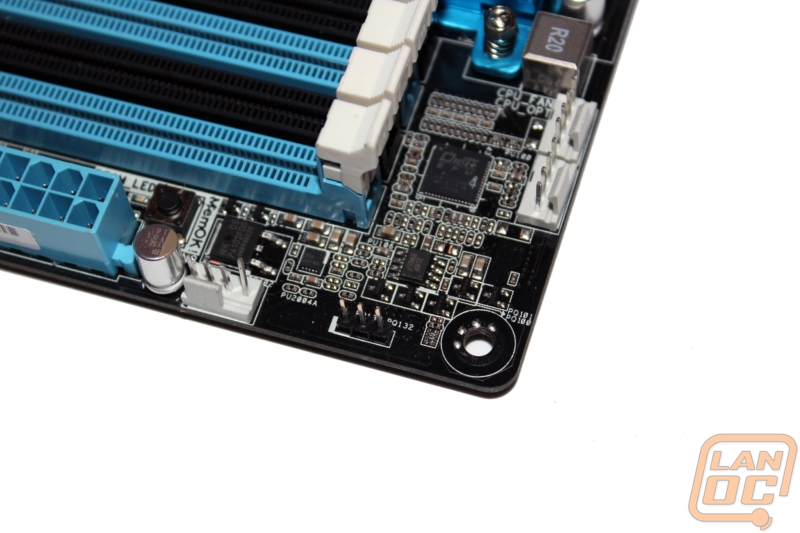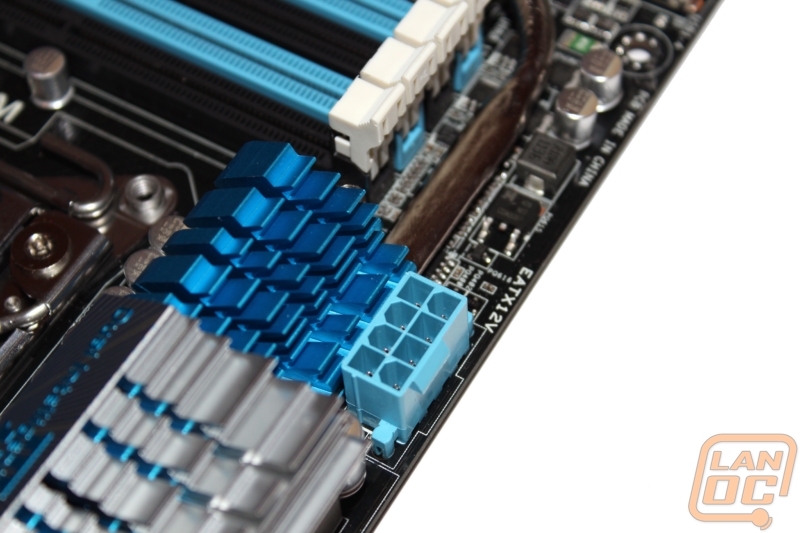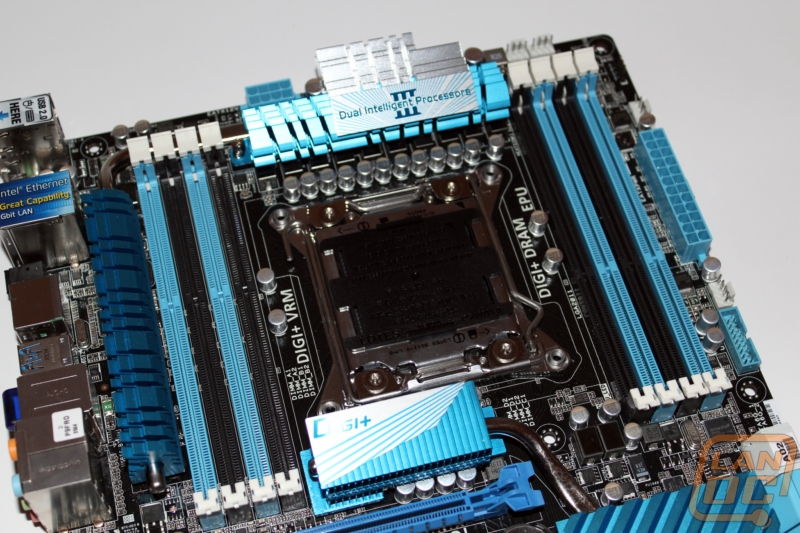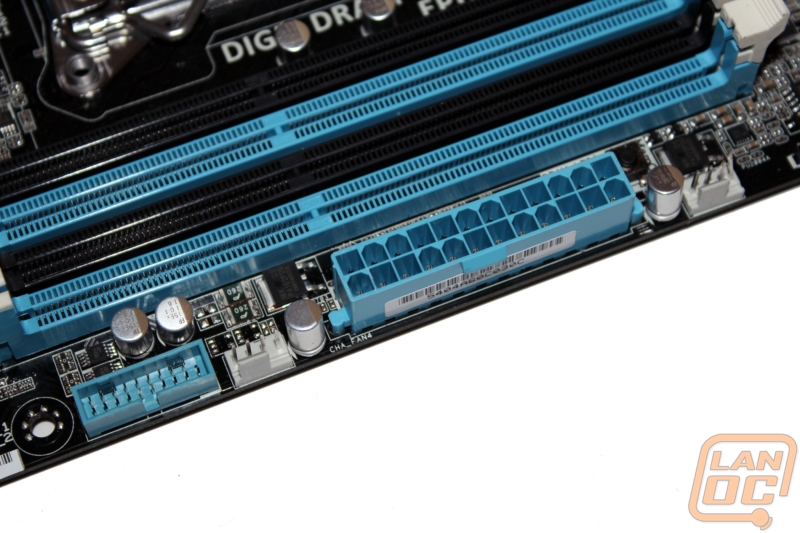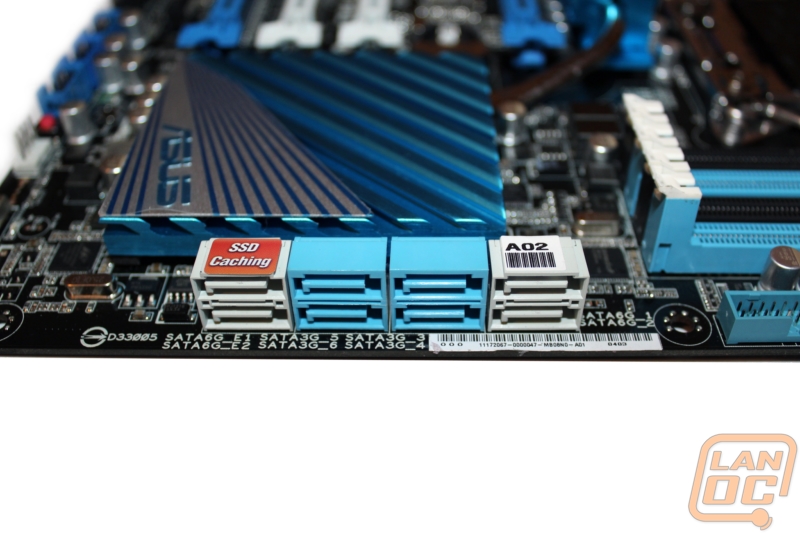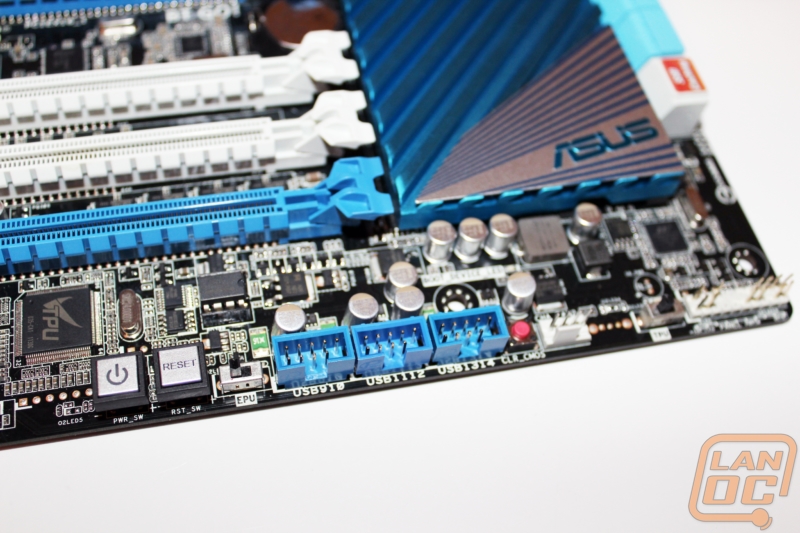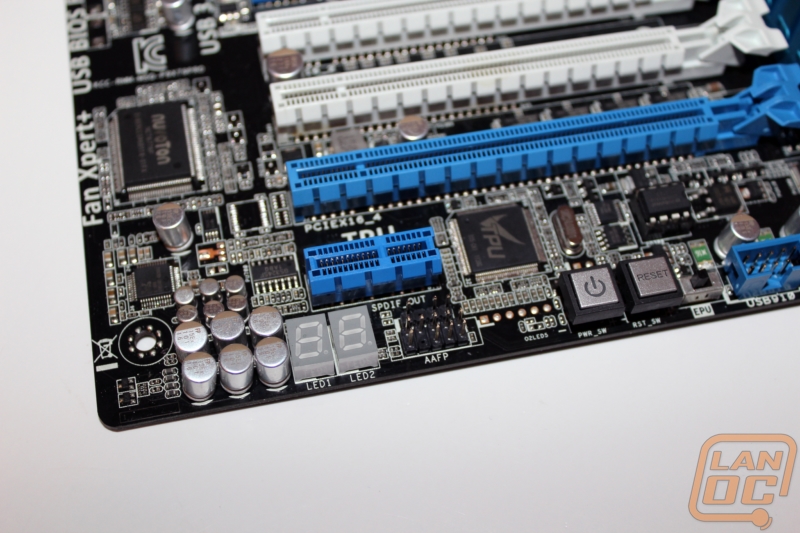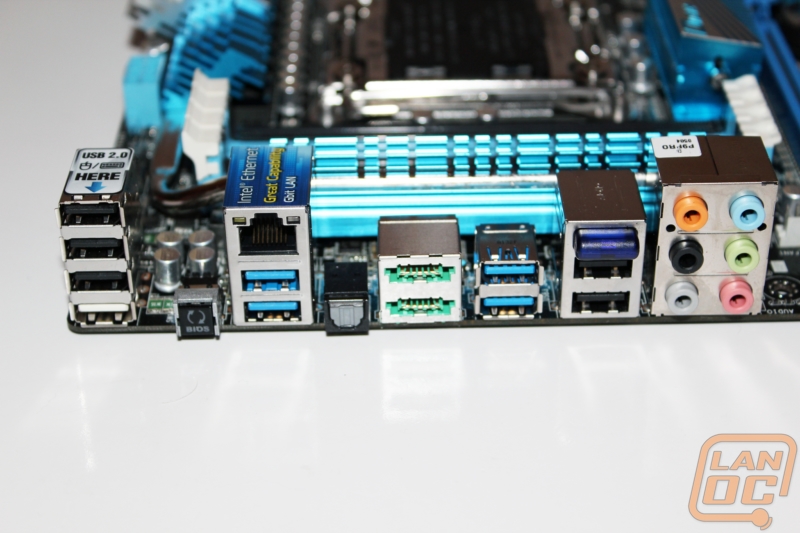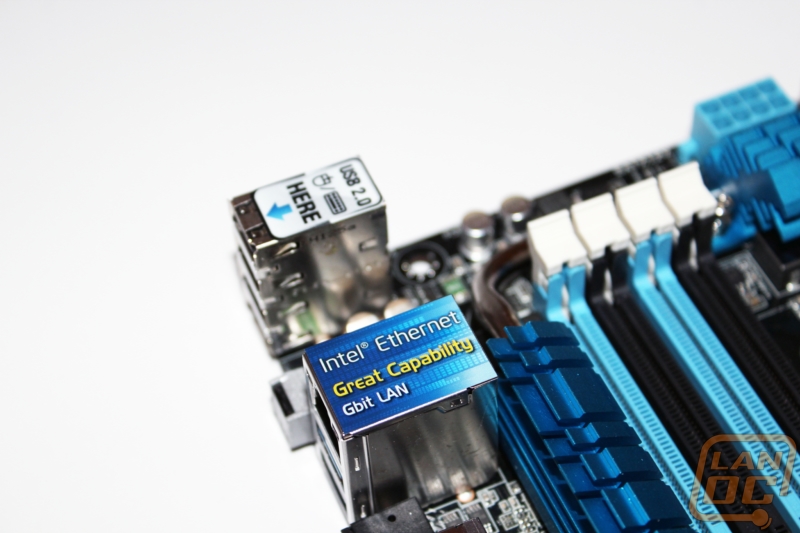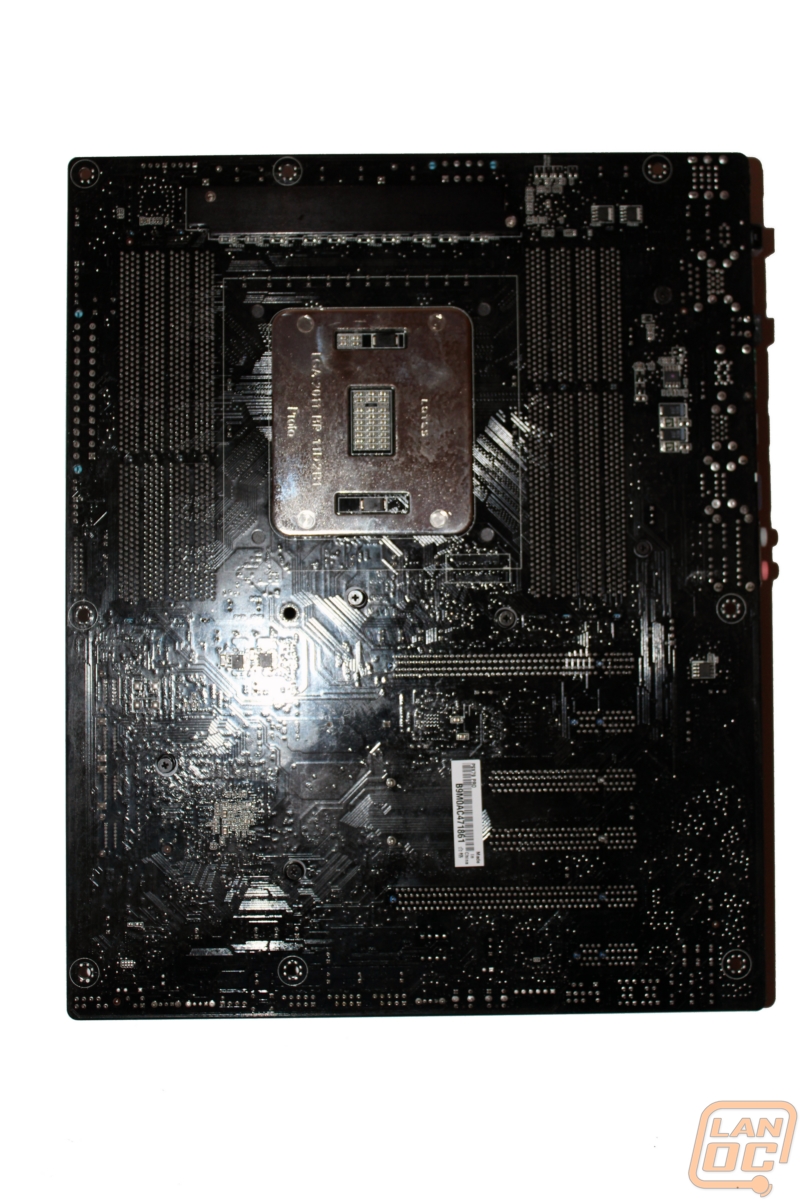Asus P9X79PRO - Board Layout
- Details
- Category: Motherboards
Board Layout
Starting in the top right corner you get your first clue that Asus puts a lot of thought into every one of their boards. In the top right corner alone you have a total of three 4 pin PWM fan headers available (out of a total of 6). Also in this photo you can see another great feature, the MemOK button. MemOK! is a hardware integrated chip that attempts to resolve issues of memory compatibility or memory that is no longer stable. When the DRAM LED stays on during boot you can hold down the MemOK! button and it will attempt to adjust memory frequencies, timings, and even voltage to allow the system to boot. This came in handy on our P67 testing, but we had no issues with our Kingston 12600Mhz ram with the P9X79 Pro.
Up on the top above the CPU and the cooling you will spot the 8 pin power plug. This plug is well placed and shouldn’t be too much trouble, even when unhooking your power cable from inside the case.
If we pull back a little bit you can get a good look at the eight blue and black DDR3 memory slots. This allows you to run two sets of quad channel ram if you so choose. Also in this photo we have a good view of the CPU mount and its twin hold down springs. Asus did label each spring letting you know how to work it, but the use of a lock and unlocked lock are a little more difficult than coming out and saying “to unlock use this first”
To the right of the ram slots along the side you will find the 24 pin power connection. Surprisingly there is yet another 4 pin fan header along with an internal USB 3.0 header.
Just below the USB 3.0 header you will find 8 SATA ports. You have six ports running on the X79 chipset itself and then two more 3running off of a Marvell 9128 controller. Of those 8 ports four are SATA 2 and four are SATA 3 (two running on X79 and the other two from the Marvell controller). Asus took Intel’s SSD Caching to an all new level with their own version called ASUS SSD Caching and considering Intel didn’t bring it this feature from the X68 to the X79 this really helps Asus stand out against the competition. Asus published a nice video showing how to configure this HERE. When paired up with a small SSD they were able to improve their boot and everyday performance Asus SSD Caching. This is an improvment over Intel's design because of how easy it is to configure.
Asus packed all of the USB 2.0 connections along the bottom row in an easy to reach area, perfect for cable management. Along with the USB headers you get yet another four pin fan header, making a total of 6 four pin headers. Also pictured is the front panel connection all the way in the right corner. In this area you will also find multiple switches and buttons.
Starting from the right side, the first switch you will find is the TPU switch. This is a built in processing unit on the motherboard to help get an easy and powerful CPU overclock with the flip of the switch. This will execute an approximate overclock of 4.3Ghz. Along with the TPU switch you will also find the EPU switch. The EPU is similar to the TPU but it is a processing unit designed to provide real time power management to keep your energy savings to the highest level possible. It does this by executing a basic undervolt to the CPU without changing the CPU frequency or performance. This will maintain your stock performance while lowering power consumption and reducing idle and load temperatures.
We also mentioned buttons didn't we. Well starting from the right you will find a small red button that is used to clear the CMOS. They made sure the button is visible, the red stands out a long against the blue motherboard. But at the same time the button isn’t too easy to get to, intentionally. This is done to prevent someone from resetting their BIOS unintentionally. On over to the left you will also find the power and reset buttons. Both buttons stand off the motherboard and are easy to get to. When the board is powered up they are both back-lit also.
Past the power and reset buttons you have two more things along the bottom edge of the P9X79 PRO. You have a header labeled AAFP, or as most would know it, the front panel audio header. I’m happy to see this in an easy to reach location. We have seen other board where this same header is tucked in behind the rear I/O panel making it nearly impossible to wire while keeping a clean look. Last you have a two LED readout for diagnostics.
Like the rest of the board, the rear I/O panel is packed with features and connections. You get the standard six port audio connection along with an optical component out for hooking directly up to a home audio system. For USB ports you have a total of 10 on the rear I/O panel. Of those 10 four are USB 3.0 and the other six are USB 2.0. One of those 2.0 ports is white in color to help it stand out. This port when used in conjunction with the BIOS button the rear I/O panel will let you flash back your BIOS to a new version. I will talk a little more about this function here soon. The P9X79 PRO also has two powered eSATA connections the I/O to help hook up any external drives at a good speed. For Ethernet you have a single 10/100/1000 port. Asus made a point to label that Ethernet port to point out that the P9X79 PRO uses an Intel NIC, a nice touch. Last but not least you have built in Bluetooth.
The PCI slot breakdown gives you two PCI Express x16 slots that are spaced out with three spots in between. Of the other slots you have two more x8’s and two x1’s. No legacy slots this time around. The way the slots are positioned you can use three video cards and still have access to one x1 slot if needed. It should also be pointed out that Asus went with the butterfly style hold down that makes using a screwdriver to reach between cards and unlock the slot possible.
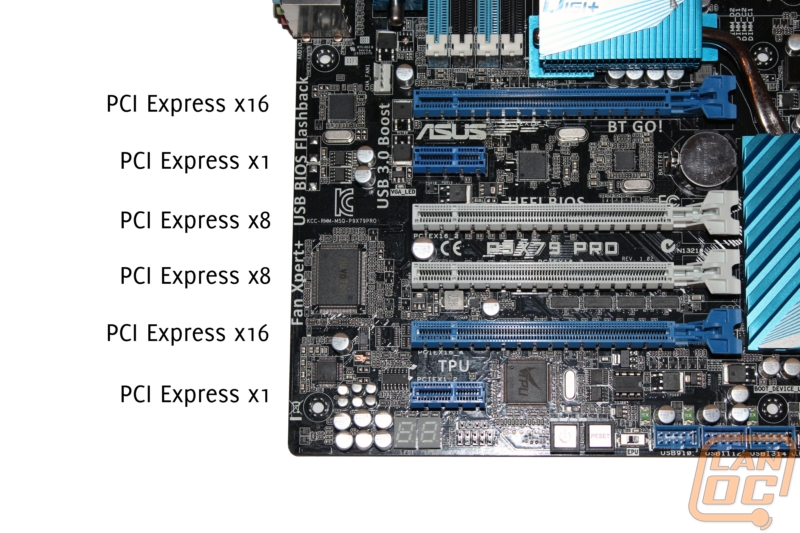
In case you haven’t already noticed, Asus went with a black PCB with a blue theme for everything else.

